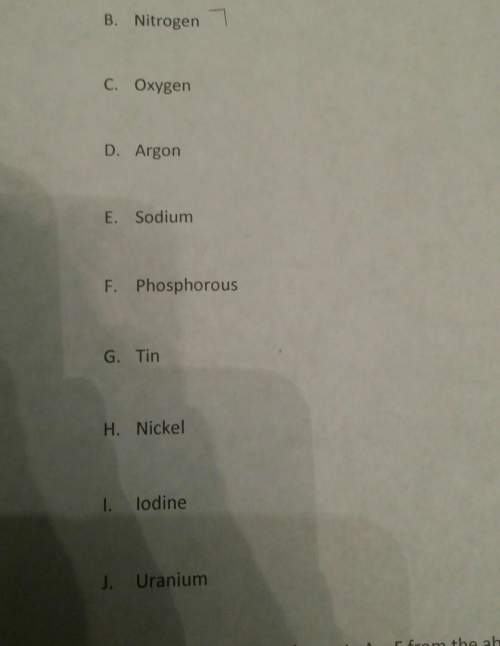
Chemistry, 26.07.2019 21:20, tylerkitchen44
Calculate the diameter of a discrete particle whose terminal settling velocity is 1.044 x 10-2m/s. the particle density is 2.650 kg/m3 and the water temperature is 15°c. assume stokes' law applies and that the density of water is 1 000 kg/m3. nb: the dynamic viscosity of water at 15°c is 1.235 x 10-3 pa. s

Answers: 1
Other questions on the subject: Chemistry

Chemistry, 21.06.2019 21:00, HelenKellerwasaSlutt
The earth's moon is unusually large. two popular theories of the moon's origin include the "sister world" hypothesis, which states that the moon formed from the same materials as the earth, near enough to the earth that they fell into orbit around each other. a second theory is the "capture" hypothesis, in which the moon formed elsewhere in the solar system, and the earth's gravity pulled it into its orbit. studies of what the moon is made of indicate that some of its materials had to come from the earth or from the same area of the solar system where the earth had formed. at the same time, the moon does not contain much of the material that makes up the earth's core, so the moon could not have formed from the same materials as the earth. how do the two facts above affect the described theories of the moon's origin? a. they show that scientists will never agree on where the moon came from. b. they show that more experiments on moon formation need to be done. c. they show that no theory accounts for the existence of the moon. d. they show that neither theory is complete and entirely correct.
Answers: 2



Chemistry, 23.06.2019 04:20, monifaWilson
The graph shows one consequence of urban sprawl. how did urban sprawl contribute to the change in biodiversity
Answers: 2
Do you know the correct answer?
Calculate the diameter of a discrete particle whose terminal settling velocity is 1.044 x 10-2m/s. t...
Questions in other subjects:
















